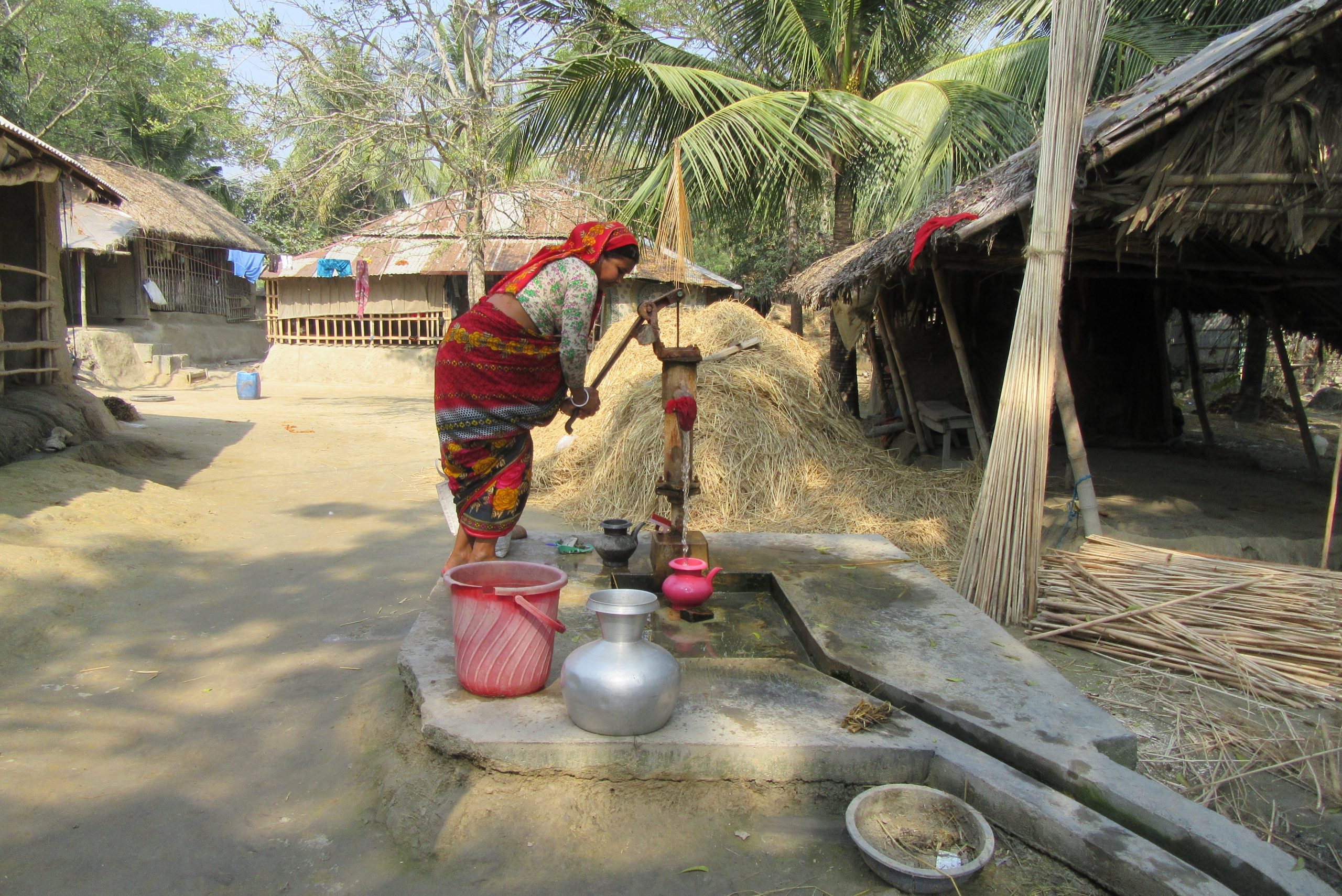Tanjila Akhter, Bangladesh University of Engineering and Technology (BUET)
Bangladesh has successfully achieved the Millennium Development Goals target for drinking water. However, there are substantial challenges ahead in achieving the SDG target of ‘safely managed’ drinking water, which is much more ambitious, incorporating aspects of accessibility, reliability, affordability and safety.
In this Early Career Researcher Feature, Tanjila Akhter, Lecturer at the Institute of Water and Flood Management, BUET, discusses some of the key drinking water challenges coastal Bangladesh faces in light of SDG6.1 target. Tanjila’s research, as part of REACH’s ‘Coastal Water Security’ observatory specifically explores how hydrogeology and water quality affects drinking water security in Bangladesh’s Khulna District.
Why is your research relevant and important in the Bangladeshi context?
The country lags behind the SDG 6.1 target, with 74% of the rural population having access to improved water sources on premise and 63% of rural people having access to water from a source that is free from contamination (UNICEF/MICS, 2013). Lack of safe drinking water is a critical issue for the coastal population due to different water quality constraints, various natural shocks and disasters and seasonal water scarcity. The problem of scarcity (i.e. accessing drinking water in adequate quantity) and of acceptable quality is more acute in the southwest coastal region, due to its complex hydrogeological formation and adverse water quality.
Water quality related issues such as salinity, high iron concentration, and arsenic contamination, along with unavailability of suitable aquifers, and lowering of the water table pose threats to many areas in coastal Bangladesh. Supply of safely managed drinking water in the coastal area thus remains a critical challenge which calls for a better understanding of the current situation.
What have been some of the findings for your research so far?
As part of this study, I investigated the state of drinking water security in Polder 29, located in Khulna district in southwest coastal Bangladesh. I used a mixed methods approach, including hydrogeologic mapping, water infrastructure audit, tubewell salinity analysis and household survey. So far, the research points to a number of key findings:
Tubewell based drinking water supply mainly developed in the northern areas due to the availability of suitable deep aquifer (Figure 1). Due to the presence of widespread salinity in the shallow aquifer in the southern areas, households resort to different alternative options including pond water, pond sand filters, rainwater harvesting or vended water.

However, despite constraints from salinity and iron, the number of tubewells has grown exponentially. The increase has been substantially greater for shallow tubewells (72% of total tubewells), in part because they are used for purposes other than drinking. Only 38% of functioning tubewells are used for drinking, and the majority (65%) of tubewells used for this purpose are deep tubewells.

Half of the tubewells (41% of deep tubewells and 85% of shallow tubewells) supply water that exceeds the national salinity standard for drinking water (1,000 ppm) (Figure 2). As such, when salinity is considered, the drinking water coverage across Polder 29 drops substantially (Figure 3).

These findings contrast with the national assessment based on the census data which shows about 80-100% (BBS, 2011[ ) of tube-well coverage in most areas of Polder 29, except pocket areas in the south. Analysis of the household survey data showed important implications in terms of accessibility and reliability; only 25% household have an improved water source within their premises, and 24% households use one source round the year. While, the other households need a water collection time of 15 minutes to as high as 2 hours and use two, three or more than three water sources in a year.
A groundwater model was developed for the study area to understand the future salinity risk in the shallow aquifer resulting from increased river salinity induced by climate change. The model shows that considerable areas in the south of the polder are under future salinity risk where people use shallow tubewells for drinking purposes.
What are the key implications of your research?
There are great challenges ahead in achieving SDG 6.1 targets in Bangladesh, especially in the coastal region. Although, there is high access to an improved water source (in compliance with allowable arsenic standard) in Bangladesh, achieving the ambitious SDG 6.1 target for the southwest coastal zone, in terms of safety, reliability and accessibility will be very challenging. Findings from this study highlight that the national assessment does not capture the real picture in terms of coverage.
Salinity is a major water quality constraint for drinking water in the southern coastal area. Hence it needs to be considered adequately as an important parameter in the safely managed drinking water agenda along with arsenic and E. Coli and must be included as part government regional surveys. To this end, groundwater risk mapping – including hydrogeologic delineation and systematic monitoring and management of groundwater salinity risks – helps to inform policy and planning to improve water security.

